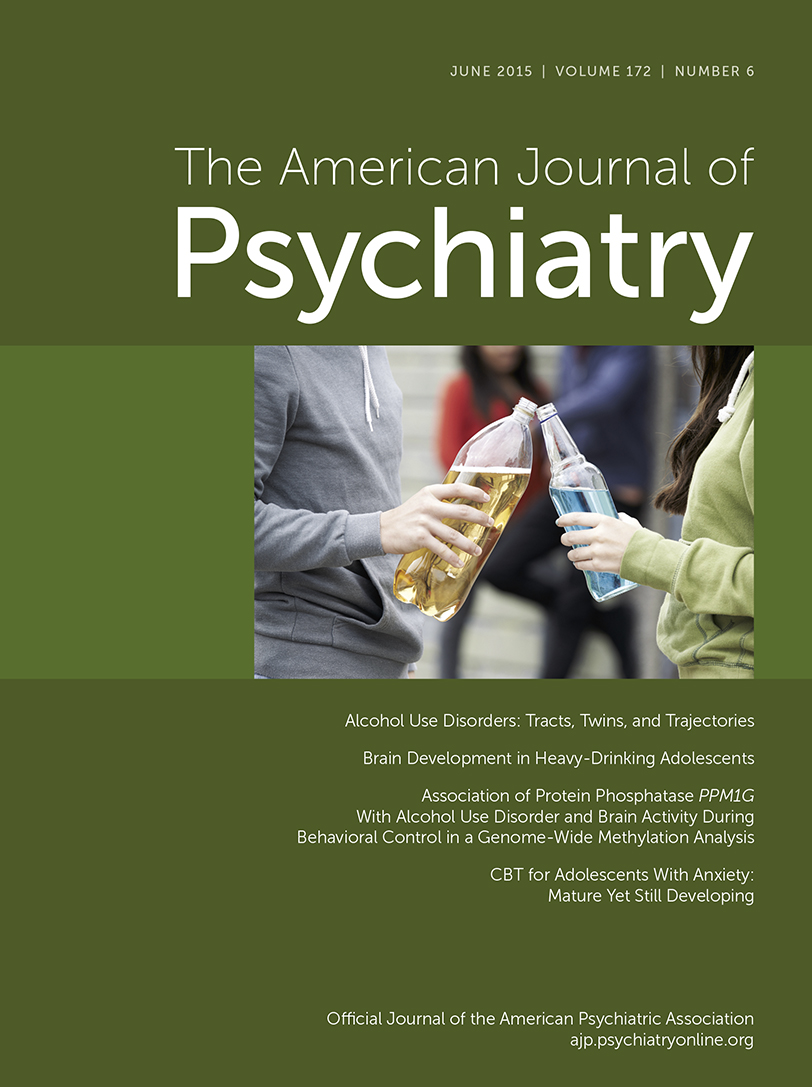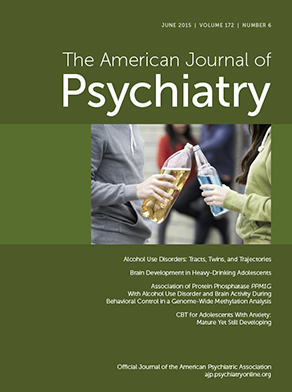The article by Kendler and colleagues (
1) in this issue is timely. Inheritance is known to contribute to parent-offspring resemblance, and new genetic findings at the level of DNA command attention. Such findings represent major achievements for our field (
2,
3), but what about the contribution of environmental risks? Genes alone do not explain the complex patterns of inheritance observed for psychopathology: both genes and environment contribute. The Kendler et al. study serves to remind us of approaches that simultaneously capture both genes and rearing environment by virtue of their design.
Historically there has been a long-standing interest in the impact of rearing environment on mental health. However, twin studies in the late 20th century revealed that many important measures of environment, such as quality of parent-child relationship, were themselves heritable (
4). At the time, for some, this was a somewhat surprising finding; now it is more widely accepted that many potential environmental risks, such as life events and parenting, are heavily influenced by genetically influenced characteristics of parent and offspring, who shape, select, and evoke environmental circumstances. These findings highlighted the value of “genetically informative” research designs, such as twin studies, that allow the testing of causal hypotheses about environmental risk factors after taking into account links with psychopathology explained by genetic contributions (
5). Such designs showed, for example, that life events have causal risk effects on depression (
6) and that physical maltreatment elevates the risk of antisocial behavior (
7). However, most of these genetically informative studies enable the testing of genetic (G) and environmental (E) contributions to resemblance and dissimilarities
within the same generation (e.g., twins); not many designs have been able to investigate contributions to cross-generational parent-child resemblance.
The design presented by Kendler et al. indirectly captures G and rearing E contributions by utilizing offspring whose families have three parents—two biological parents and a stepfather. Other designs that achieve this are available, such as adoption studies (
8), children-of-twin designs (
9), and the assisted conception design (
10). However, each of these approaches has its own set of strengths and limitations. The introduction of a new design is important because greater confidence is achieved when similar findings are generated across different types of study. Moreover, previous designs have been based on relatively rare groups, whereas triparental families are quite common.
The authors used Swedish registry data to generate families consisting of an offspring, a biological mother, a socially defined, genetically unrelated stepfather with whom the offspring lived for at least 10 years, and “absent” biological fathers who had minimal postnatal contact. The study focuses on three offspring outcomes: drug abuse, alcohol use disorder, and criminal convictions. The mother provides G and rearing E (and intrauterine E), the biological father provides G only, and the stepfather provides E only. The authors applied the design to assess parent-offspring resemblance in outcomes across each of the three different types of parent-offspring dyads. Background similarities between parents were taken into account.
In keeping with previous genetic studies, Kendler et al. show that both G and E contribute to parent-offspring similarities for all three outcome measures, with stronger G effects. However, notably, the authors find that rearing E also matters. The contribution of rearing E emerges most robustly for alcohol use disorder and approaches significance for the measure of criminal convictions, based on comparison of biological mother (genes and rearing) and biological father (genes only). The same conclusions about rearing effects can be inferred from the strong associations between unrelated stepfather and offspring for drug abuse, alcohol use disorder, and criminal convictions. The authors undertake a number of other tests to demonstrate robustness, given that there are caveats to the primary analyses.
The authors also deal with the question of whether these three problem outcomes “breed true.” Cross-generational genetic transmission shows strong disorder specificity (i.e., drug abuse in a biological parent predicts drug abuse in offspring), but there are still prominent nonspecific genetic transmission effects. That is, one type of outcome in the biological parent can predict a different type of outcome in offspring. This is in keeping with twin and molecular genetic findings showing that the same set of genetic risks have risk effects on different forms of psychopathology (
2). However, nonspecificity of intergenerational transmission seems to be most pronounced for transmission via rearing; for each of the three problem outcomes, nonspecificity is most pronounced for unrelated stepfather and offspring resemblance.
What might these findings mean for clinical practitioners? First, they suggest that for the cross-generational transmission of drug abuse, alcohol use disorder, and criminal convictions, rearing environments matter even with strong G effects included. A second point, likely already intuitive to most clinicians, is that biological mothers’ choice of a partner with alcohol, drug, or criminal problems contributes to risk of these problem outcomes in her offspring.
For researchers, a new design that allows for assessing E and controlling for G across generations is very welcome. Like all designs, this one has limitations as well as strengths, which the authors describe. Among the limitations is that identification of this large sample was assisted by population registry data, a resource that is largely unavailable outside the Scandinavian countries. There is also uncertainty about the degree of offspring contact with biological father and paternal family members, which may result in underestimates of the effects of rearing E and overestimates of G. Naturally, stepfathers are selected by biological mothers and are nonrandomly allocated to families—biases that were tested for but that cannot be completely excluded. The authors conducted a number of checks to assess the robustness of results in relation to some limitations.
The presentation of this new design leads us to consider what sorts of issues might be addressed in the future using such a design. Will investigators observe dissimilar patterns of genetic and rearing contributions to parent-offspring resemblance for different types of outcome, such as mood disorders, suicidal behavior, and neurodevelopmental disorders? The authors were not able to address this question in the present data set, but what about the effects of timing and duration of rearing E risks and rearing contributions from other family members, such as closely involved grandparents? Finally, a key issue is what mechanisms explain the rearing E contribution to the problem outcomes in this study. The authors discuss how “rearing” could include direct imitation of behaviors exhibited by biological parents and stepparents (social learning) as well as indirect aspects of rearing E that could involve the parent (e.g., relationship quality) or reflect factors that have an impact on parent and offspring (e.g., neighborhood). The pattern of observations from this study suggest that transmission may be direct for criminal behavior, because links were especially strong for stepfather-offspring resemblance and indirect for the other two outcomes. However, further investigations of this question will be needed. Identifying mechanisms is an important goal if we are to take observational findings to the level of translation and identify potential intervention targets for disrupting the transmission of mental health problems across generations.

